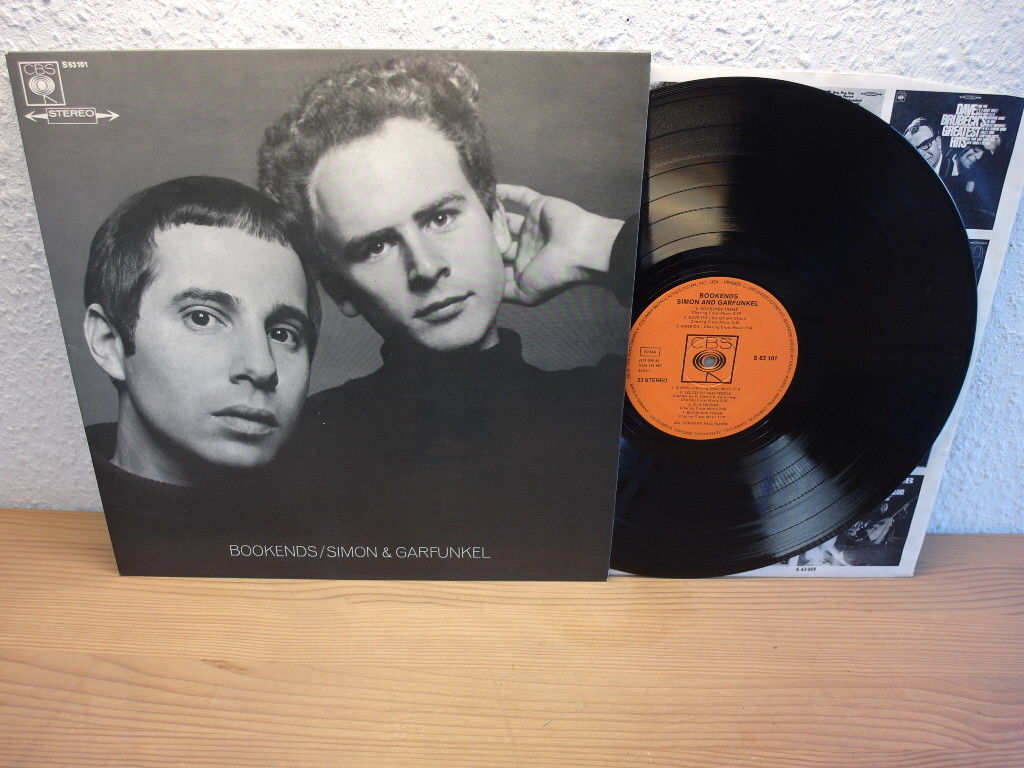

The “Bookends Theme ( Reprise)” is preceded by " Old Friends", which segues into the song with a single high, sustained note on the strings. The song is a brief acoustic piece (once compared to English rock band the Moody Blues) that evokes "a time of innocence." The "Bookends Theme" that opens and closes side one is played on the acoustic guitar, with no additional instruments. A "clean" version of "Bookends" (without the segued string from " Old Friends") was featured on Simon and Garfunkel's Greatest Hits. Robinson" single, issued on Apby Columbia Records. " Old Friends" and “Bookends” were placed on the B-side of the " Mrs. It appears twice on the track listing, as the first (shortened version) and last (known as the Reprise) songs on side one of the original vinyl LP. But more than that, it elevated Simon & Garfunkel to a new level. Simon once referred to Bookends as "our first serious piece of work," and it stands decades later as the record that transported a perfectly pleasant folk act to a more consequential place." Bookends", also known as " Bookends Theme", is a song by American music duo Simon & Garfunkel from their fourth studio album, Bookends (1968). 1 and stayed there for seven weeks, pretty much supplanting The Graduate after a total of nine weeks in that position.

1 in 1965 after electric instruments were added to the original acoustic version of the song.īookends also climbed to No. That album was also home to "The Sound of Silence," which became the duo's first No. Bookends featured the first album appearance of the song it had only been included as two brief sketches on the hit Graduate soundtrack. 1, giving Simon & Garfunkel their second chart-topping single. Robinson," buoyed by The Graduate's buzz and success, shot to No. They were somewhat of a gamble here that paid off. Robinson." It all serves as a preface to Bridge Over Troubled Water's textured canvases (the percussive handclaps that launch and then propel "Fakin' It" are a precursor to the rhythmic stomp of "Cecilia") and more introspective lyrical themes. Robinson'Īnd then there's Simon's songwriting, which takes a more personal stance on songs like "Overs," "America" and "Mrs. Garfunkel even visited a retirement home and recorded old people talking about their lives and then edited it into the sound collage that leads into the closing tracks on Side One, while Simon ran himself and Garfunkel through dozens of vocal takes until he got just the one he wanted.
Simon garfunkel bookends torrent#
Together, they form a cornerstone record of the '60s, and a huge creative leap for Simon & Garfunkel, who found in Roy Halee and John Simon co-producers who helped shape much of the record's sound – from the string and brass arrangements heard in several songs and the sampled bit of "The Sound of Silence" hidden among a torrent of noise running throughout "Save the Life of My Child" to the widescreen sweep of "America" and "Fakin' It" and the array of layered instruments and sound effects that line the entire album. Plus, those three Top 25 singles that came out in the year leading up to were on there. 1, the first Simon & Garfunkel-affiliated LP to do so. The rest of the album is made up of a mix of songs the duo recorded that had no place within the first side's concept or were left over from The Graduate soundtrack, which was released less than three months earlier and made it to No.
Simon garfunkel bookends series#
Pepper's Lonely Hearts Club Band and Simon's writing experiments on hashish – about the cycle of life told through a series of songs bookended, if you will, by two versions of "Bookends Theme": the album-opening instrumental that runs 30 seconds, and the side-closing take that includes vocals and is almost a minute longer.

So, their fourth LP was a concept album of sorts – partly inspired by the Beatles' Sgt.


 0 kommentar(er)
0 kommentar(er)
